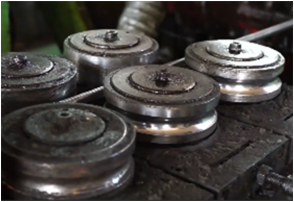юли . 27, 2024 11:04 Back to list
Innovative Fastening Solutions for Building Stronger Structures with Advanced Structural Screws and Techniques
Understanding Structural Screws An Essential Hardware in Modern Construction
Structural screws have emerged as vital components in modern construction, offering a reliable and efficient alternative to traditional fasteners like lag bolts and lag screws. Designed specifically for load-bearing applications, structural screws play a crucial role in ensuring the safety and integrity of structures. This article will explore the characteristics, advantages, and applications of structural screws, highlighting their significance in the building industry.
What are Structural Screws?
Structural screws are heavy-duty fasteners that are engineered to streamline the assembly of wood, metal, and composite materials in various construction applications. Unlike standard screws, which may be suitable for light-duty tasks, structural screws are rated for significant load-bearing capacities. This makes them ideal for situations where strength and durability are paramount, such as in framing, decking, and joining large structural members.
These screws are typically made from high-strength materials, often with a surface coating that enhances their resistance to corrosion. Additionally, they come equipped with advanced thread designs that improve grip and stability, reducing the likelihood of stripped or damaged joints. Many structural screws also feature self-drilling tips, eliminating the need for pre-drilling in many applications, which can save considerable time and labor costs on construction sites.
Advantages of Structural Screws
One of the primary advantages of structural screws is their ease of use
. Their ability to be driven directly into various materials without pre-drilling allows for quicker and more efficient fastening, which is essential in high-paced construction environments. Moreover, the innovative design of structural screws often results in less splitting of wood and provides a more visually appealing finish than traditional fasteners.Structural screws also offer superior tensile and shear strength. Their robust construction can withstand significant forces without failure, making them suitable for high-stress applications such as seismic or wind-resistant structures. This performance reliability is crucial for meeting building codes and ensuring the longevity of a project.
structural screws

Additionally, structural screws are versatile. Available in various lengths and diameters, they can be used in a wide range of projects, from residential home construction to large commercial builds. Their adaptability allows builders to utilize a single type of fastener for different applications, streamlining inventory and reducing costs.
Applications of Structural Screws
The application of structural screws spans across various sectors within the construction industry. They are widely used in residential framing, particularly in the creation of roof trusses and floor systems. Their strength makes them ideal for deck construction, where durability against the elements is critical.
In commercial construction, structural screws are employed in the assembly of steel and wood hybrid structures, where they serve as critical connectors in glulam beams and panels. The use of structural screws in these applications not only enhances the structural integrity but also contributes to the overall aesthetic appeal of modern architecture.
In recent years, the demand for sustainable building practices has also led to the increased use of structural screws in timber construction. As engineers and architects seek to minimize the carbon footprint of their buildings, using engineered wood products with structural screws allows for more sustainable design without compromising strength.
Conclusion
In conclusion, structural screws represent a significant innovation in fastener technology, offering unparalleled strength, versatility, and ease of use in construction. As the industry continues to evolve, these fasteners will undoubtedly play an increasingly prominent role in the safety and efficiency of building practices. Understanding their characteristics and applications is essential for builders, architects, and engineers alike, as they strive to create safer, more resilient structures for future generations.
-
The Ubiquitous Reach of DIN934 in Application Realms
NewsMay.16,2025
-
Exploring Different Bolt Types
NewsMay.16,2025
-
Cracking the Code of Sleeve Anchor Mastery
NewsMay.16,2025
-
Clamp Design Principles,Types and Innovations
NewsMay.16,2025
-
Artistry Inspired by the Humble Anchor Bolt
NewsMay.16,2025
-
A Deep Dive into Screw Types
NewsMay.16,2025


